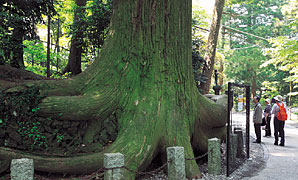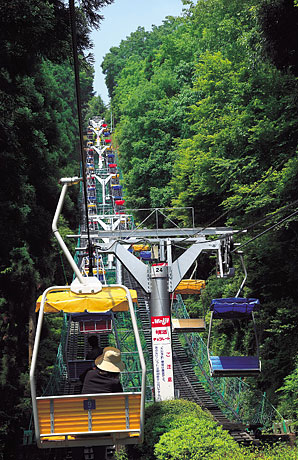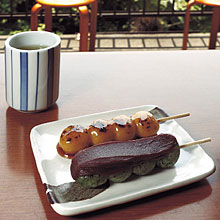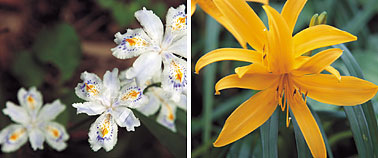Japan Travelogue Mount Takao
Mount Takao is quickly reached from one of Tokyo’s major centers, Shinjuku. In only about 50 minutes an electric express train will speed you away from the metropolis to Takaosan-guchi Station at the end of the Keio railway line. Above are forested slopes that are home to many wild plants, animals and birds. Near the mountain top is Takaosan Yakuo-in, a temple with buildings dating back centuries. Nature and history, so close to Tokyo—it is no wonder that 2.5 million people go up the mountain every year.
Let me take you on a tour when it is early summer, when the leaves become a deeper shade of green practically each day. We could climb from the station to the top of the mountain but that would take about 90 minutes, so we decide to go up the easy way. We can get partway up the mountain either by cable car or mountain lift operated by Takao Tozan Dentetsu, and decide on the lift because the weather is fine and we want to enjoy the fresh mountain air. The ride takes 12 minutes.
We leave the lift gondolas behind us and set out on foot, heading for the top of the mountain. We take Trail No. 1, one of the pathways leading to Takaosan Yakuo-in Temple. It is paved, making the hike easy, and the thick foliage above keeps us nicely in the shade.
After a while we come across a group of people talking and looking at illustrated handbooks beside the trail. Some are looking through magnifying glasses. They say they have come to learn more about the plants on Mount Takao.
“At this time of the year, the fern leaves are young and very beautiful. The mountain has more than 140 varieties of ferns,” says one of the women, sharing with us her love of nature. “I come here almost every week. The mountain has about 1,300 plant species. More than sixty of them, including Takao sumire and Takao waniguchiso, were first discovered here on Mount Takao.”


Top left: Momiji-ya, a teashop near Takaosan Yakuo-in Temple. Trail No. 1, which leads to the temple, has a number of teashops and souvenir kiosks along the way.
Top right: Trail No. 1 passes the Monkey Garden, home to about 30 monkeys living in an environment that is natural for them while letting visitors see them up close.
Above: Tako-sugi is a 450-year-old cedar with roots like octopus legs.


